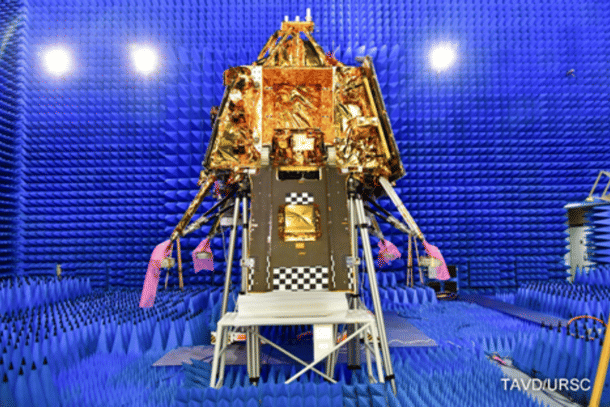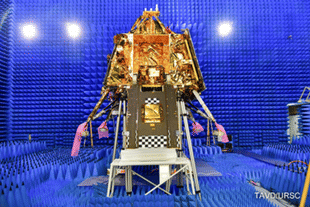Science
That's How We Do It: ISRO Scientists Offer Prayers At Tirupati Ahead Of Chandrayaan-3 Launch
Swarajya Staff
Jul 13, 2023, 09:22 AM | Updated 09:22 AM IST
Save & read from anywhere!
Bookmark stories for easy access on any device or the Swarajya app.


Ahead of the launch of the Chandrayaan-3 mission, a team of scientists from the Indian Space Research Organisation (ISRO) offered prayers at the Tirupati temple.
The scientists also carried with them a miniature model of Chandrayaan-3.
Chandrayaan-3, the third lunar mission of the Indian space agency, will be launched at 2.30 pm tomorrow (14 July) from Satish Dhawan Space Centre in Sriharikota.
"A team of ISRO scientists team arrive at Tirupati Venkatachalapathy Temple, with a miniature model of Chandrayaan-3 to offer prayers," ANI reported.
#WATCH | Andhra Pradesh | A team of ISRO scientists team arrive at Tirupati Venkatachalapathy Temple, with a miniature model of Chandrayaan-3 to offer prayers.
— ANI (@ANI) July 13, 2023
Chandrayaan-3 will be launched on July 14, at 2:35 pm IST from Satish Dhawan Space Centre, Sriharikota, ISRO had⦠pic.twitter.com/2ZRefjrzA5
The ISRO has already undertaken a 24-hour 'launch rehearsal' simulating the entire launch preparation and process for the mission.
The mission readiness review was completed today, ISRO confirmed.
"The board has authorised the launch," the space agency said in a tweet.
The countdown will begin from today (13 July).
Earlier on 10 July, speaking on the sidelines of India Space Congress 2023, ISRO Chairman S Somanath said that the space agency has designed the Chandrayaan-3 after learning from the failure of Chandrayaan-2.
"We were trying to target a landing in a particular spot, closer to the South Pole, that is 70 degrees to the South Pole, and in doing so, we faced certain challenges," Somanath said on Chandrayaan-2.
The five engines responsible for the retardation, or reduction of the velocity, of the Chandrayaan-2 lander "developed a little higher thrust than that was expected," Somanath said.
This was coupled with the lander's desperation to land at its designated spot even when it was still far away, thereby increasing its velocity, which was already very high, even if still within the specifications.
"So, there was a contradictory requirement of reaching to the exact spot and, at the same time, achieve a low velocity. It became mathematically difficult for it to do it in the available time. So, finally, when it actually did it, it was (sic) fell short of almost half a kilometre and the velocity of touch was higher," the ISRO chief said.
As to what needed to be rectified in Chandrayaan-3, Somanath said, "We found that... we must give more flexibility to the craft to handle dispersions, essentially."
"So, instead of success-based design in Chandrayaan-2, we are doing a failure-based design in Chandrayaan-3. What all can fail, and how to protect it — this is the approach that we have taken...," he said.
As for a concrete change, ISRO has expanded the area of landing for the Chandrayaan-3 lander, from 0.5 km x 0.5 km in Chandrayaan-2 to 4 km x 2.5 km in the next instalment.




